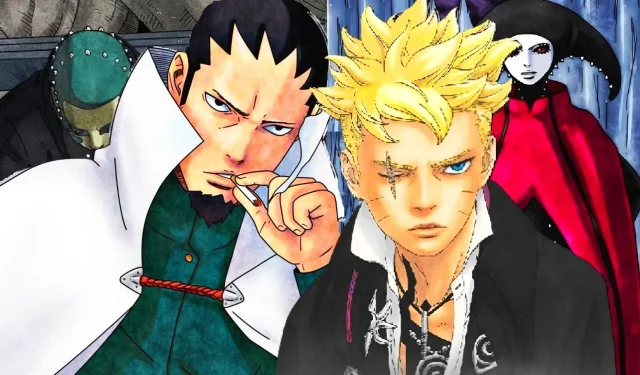
Warning: Spoilers for Boruto: Two Blue Vortex Chapter #17
The latest chapter of Boruto reignites discussion about its artistic and narrative influences, particularly highlighting connections to the celebrated series Hunter x Hunter by Yoshihiro Togashi. This echoes the previous statements made by Mikio Ikemoto, the series’ illustrator and co-author, who has openly acknowledged his admiration for various shōnen franchises, including Dragon Ball and The Matrix. Notably, his work incorporates visual nods to Jojo’s Bizarre Adventure, showcasing a rich tapestry of inspirations beyond its predecessor, Naruto.
Masashi Kishimoto, creator of Naruto, has also referenced Togashi’s impact on his storytelling, particularly in the development of the Shadow Clone technique, which draws from abilities seen in Yu Yu Hakusho. With these connections in mind, it is no surprise that Boruto: Two Blue Vortex taps into themes and character dynamics prevalent in the highly regarded Chimera Ant arc of Hunter x Hunter when constructing its new antagonists, known as the Divine Trees.
Divine Trees: Echoes of the Chimera Ants in Boruto
Jura’s Quest for Knowledge Mirrors Meruem’s Curiosity


The similarities between the Divine Trees and the Chimera Ants are striking. Both entities represent a fusion of biological organisms infused with human traits, endowing them with extraordinary strength and capabilities. Despite their formidable powers, these beings retain fragments of the memories and personalities of those from whom they were created.
Chapter #17 of Boruto: Two Blue Vortex draws a compelling parallel as Shikamaru likens the Divine Trees to “cubs of wild beasts,”underscoring their dual nature; they are not inherently malevolent, yet they pose a significant threat to humanity. This reflection evokes similar sentiments seen in Hunter x Hunter, where Netero referred to Meruem as a ‘newborn,’ emphasizing his nascent existence and potential for growth.
Furthermore, the distinguishable communication styles of Shinki and Ryu highlight the Divine Trees’ individuality, reminiscent of the Chimera Ants, many of whom exhibited self-awareness. Notably, Jura’s intellectual pursuit—preferring to explore knowledge in a library rather than focus on hunting—echoes Meruem’s own quest for understanding as he dominated complex board games effortlessly.
Exploring the Duality of the Divine Trees: Sentient Beings with Morality
Hunter x Hunter’s Legacy Fuels Depth in Boruto’s Villains

The Chimera Ant arc has earned its reputation as one of the finest shōnen arcs due to its exploration of humanity’s dark nature through characters like Gon and Netero. Similarly, revelations in Boruto TBV #17 that the Divine Trees are not mere predators pave the way for a complex exploration of their morality. This introspection aligns thematically with the Chimera Ants, who evolved beyond their original programming, discovering their own moral pathways.
This narrative setup opens the possibility for one or more Divine Trees to forge alliances with the ninja, akin to how Ikalgo and Meleoron allied with the hunters during their struggle against the Chimera Ants in Hunter x Hunter. Such developments would characterize these new villains not as traditional antagonists but as multifaceted beings devoid of the typical tragic backstories seen in many shōnen villains—a direction Ikemoto has committed to, as he laments the need for a shift from the tropes of Naruto.
I tried not to duplicate what was done in Naruto. That’s why there are more pure evil villains in Boruto. Real Villains. – Mikio Ikemoto.
While overlapping themes in shōnen manga are not uncommon, the distinct influence of Hunter x Hunter on Boruto is apparent. Although Boruto continues to feature villains with clear malevolent intentions, this nuanced portrayal of the Divine Trees as morally ambiguous figures enriches the narrative landscape. The character development influenced by Togashi’s intricate antagonists positions Boruto: Two Blue Vortex to potentially join the ranks of exemplary modern shōnen manga.




Leave a Reply